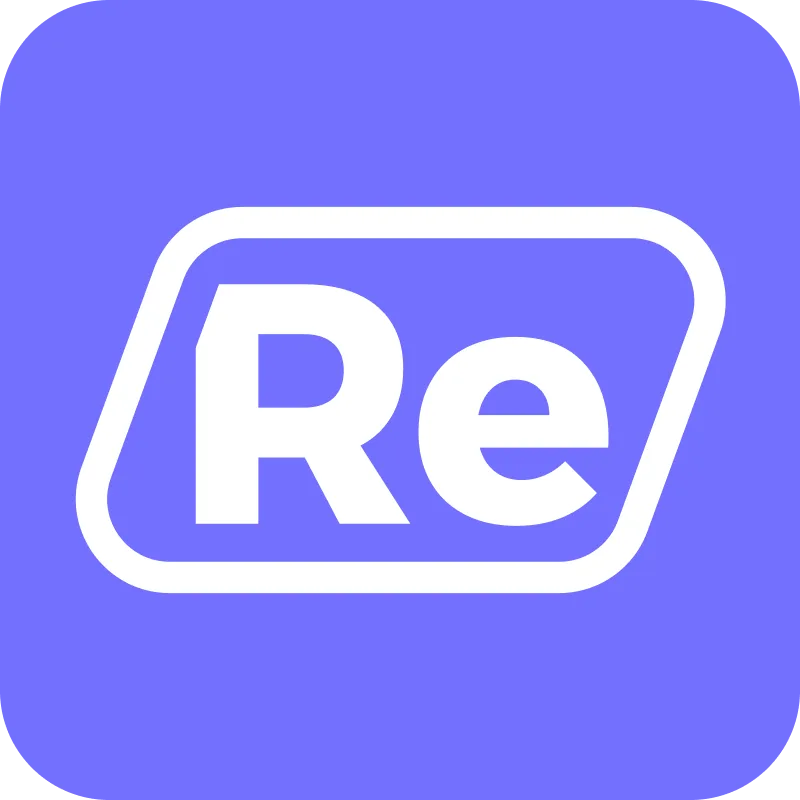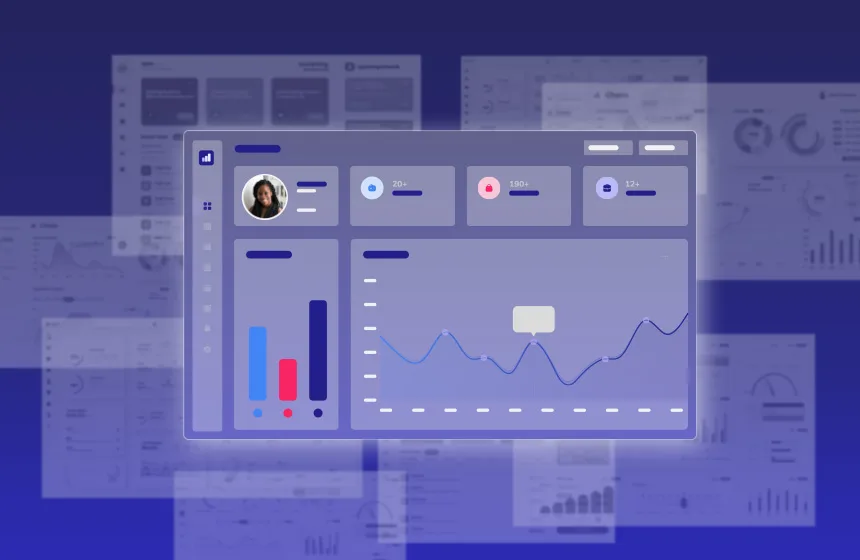Accelerate deals and increase win rates with the leading enterprise demo platform.
What is a Sales Demo?

February 13, 2025
Table of Contents
What is a Sales Demo?
A sales demo, also known as a live demo, is typically given by a sales rep to a prospect in the product evaluation process. In it, an account executive (AE) or presales team member like a solutions engineer (SE) demonstrates a product’s key features and benefits, using relevant data and customer examples for the prospect. The goal of a sales demo is to convince a prospect that your product is right for their use case and technical environment. Sales demos early in the sales cycle often address challenges the prospect discussed in the discovery process, while later sales demos might get more detailed, focusing on technical specifications and features.
Sales demos are a powerful part of a B2B sales strategy. They offer an interactive way to engage and connect with potential buyers, translating product features into tangible, real-world benefits. Understanding sales demos can dramatically improve a sales team’s effectiveness, leading to increased conversions and faster sales cycles. This comprehensive guide dives into some of the fundamentals of B2B sales demos, their importance, and how to craft winning presentations.
What Is the Difference Between a Sales Demo and a Product Demo?
A sales demo is tailored specifically to the potential buyer’s needs and challenges. It is usually conducted live, either in person or via a virtual meeting, and is interactive, allowing the prospect to ask questions and engage with the product. The sales team customizes the demo to highlight the features that are most relevant to the prospect, making the presentation highly specific to their situation.
To contrast, a product demo or tour is typically more general and feature-focused. These demos are often interactive self-guided tours available on a company’s website. They are designed to give a broad overview of the product’s features and capabilities, making them suitable for prospects who are in the early stages of the sales funnel or for those who prefer to explore the product at their own pace.
For more examples of demo types, check out The Definitive Guide to Driving Enterprise Value with Demos.
What Makes Sales Demos Important? Benefits of Sales DemosAccording to LinkedIn’s Buyer First Report, 91% of buyers prefer working with sellers that are well-informed about their industry. Plus, 44% strongly agree that they’re more likely to consider a brand when the rep shares content applicable to their role or decision-making process. A sales demo is a perfect time to showcase hyper-relevant content for the prospect, helping them see exactly how your software will work to address their use cases and pain points. Sales demos can be far more effective than tactics like free trials and freemium products, since they don’t require the prospect to load their own data to experience the product first-hand. Plus, a live demo makes it easier for prospects to ask questions in real time.
Here are some of the additional benefits of sales demos.
Increased Engagement
An interactive demo increases customer engagement, keeping the prospect involved and interested throughout the sales process. This interaction is crucial for building a relationship and fostering trust between the customer and the company.
Addressing Customer Concerns Directly
Sales demos provide an opportunity to address potential objections or concerns in real-time. By responding to questions and demonstrating features that resolve specific issues, sales teams can overcome barriers to sale on the spot.
Demonstrating Real-World Scenarios
One of the most compelling aspects of a sales demo is its ability to place the product in real-world scenarios that the prospect can relate to. This contextual demonstration helps the potential buyer visualize how the product will work in their environment.
Increased Conversions
Effective sales demos have a direct impact on conversion rates. By demonstrating the product’s value and how it exceeds that of competitors, a demo can sway purchasing decisions in favor of the product being showcased. In fact, customers using the Reprise demo creation platform experienced 50% faster sales cycles, and a 50% increase in conversion from lead to pipeline.
Reliability and Personalization
Implementing a demo program can help your team create more reliable, consistent demos at scale. Sales team members can choose from a library of templated demos, which can be personalized to each individual prospect without extensive SE involvement. A demo program helps sales teams expand the use of personalized demos, while driving home a consistent message across the board.
Best Practices for Structuring Your Sales Demo
Research the Prospect
Prior to the sales demonstration, gather as much information in the discovery phase as possible about the prospect’s business, industry, challenges, and needs. This research will inform the customization of the demo to highlight the most relevant features and benefits. If you have an interactive demo or product tour hosted on your website, you can leverage a prospect’s usage data from demo analytics to further inform how to shape your live sales demo.
Identify Their Challenges
A key step in preparing for a demo is identifying the specific challenges the prospect is facing that your product can solve. This focus ensures the demonstration is relevant and engaging. Whenever possible, try to match these challenges to relevant customer examples, where your product has solved similar problems. Sprinkle these customer anecdotes into the demo to showcase how the product could actively address these challenges.
Plan the Product Overview
Plan a structured product overview that logically progresses through features and benefits, prioritizing those that are most relevant to the prospect’s challenges.
Execute the Live Demonstration
During the live demonstration, focus on clarity, simplicity, and relevance. Ensure that each feature shown ties back directly to a benefit for the prospect, illustrating clear value. Using a sales demo environment, such as a demo creation platform, makes live demonstrations more consistent and reliable, reducing the risk of demo failures during the live presentation.
Address Their Pain Points in Your Sales Demo Process
Tailor the demonstration to directly address the identified pain points of the prospect. This targeted approach not only shows that you understand their needs but also that your product is the solution they are seeking. You can also use demos as leave-behinds after the live demo has concluded. This is particularly useful for committee decisions that involve a variety of stakeholders.
Follow Up After the Demo
If a question arises that you can’t fully answer during the demo, it’s important to follow up promptly with the necessary information. This follow-up not only ensures that the prospect has all the details they need but also reinforces the sales team’s commitment to providing excellent service. A well-timed follow-up can keep the conversation going and help move the prospect closer to making a decision.
Why Give a Sales Demo?
Transforming Theory into Practice
The primary goal of a sales demo is to bridge the gap between theoretical benefits and practical applications. When a product is presented merely in theory, its potential impact can be difficult for a prospect to understand. A sales demo, however, allows the sales professional to showcase the product in action, highlighting how it can solve specific problems that the potential customer is facing. This transition from theory to practice can help the prospect understand and appreciate the product’s value.
Building Confidence in the Product
A well-executed B2B sales demo builds confidence in the product. By demonstrating its capabilities live, the sales team provides the prospect with concrete evidence that the product can deliver on its promises. This proof of concept is crucial in moving the prospect closer to a purchasing decision (and can actually accelerate the enterprise sales cycle). Seeing the product in action also helps to eliminate any doubts or skepticism that may have come up during earlier stages of the sales process.
When Should You Deliver a Sales Demo?
Optimal Timing for Maximum Impact
Timing is a major factor in the effectiveness of a sales demo. It is most impactful when delivered after a potential buyer has shown interest in the product but before they have made a final decision. At this stage, the prospect is likely comparing various solutions and seeking the best fit for their needs. The prospect may have even viewed an interactive demo or product tour before requesting a live demo. By offering a live sales demo at this point, the sales team can directly influence the prospect’s decision-making process — and answer any outstanding, personalized questions about how the product can work for them.
Who Gives a Sales Demo?
The Role of Account Executives and Solutions Engineers
Sales demos are typically delivered by skilled account executives (AEs) or solutions engineers (SEs). These professionals are trained to effectively communicate the product’s value proposition, emphasizing features that are most relevant to the prospect’s needs. The use of a demo creation platform can empower AEs to handle more early-stage demos on their own, reserving SEs for technical stakeholders that may have questions later in the sales cycle.
Training and Preparation
Those who give sales demos must be well-prepared and knowledgeable about both the product and the prospect’s needs. Regular training sessions, along with rehearsals of demo scenarios, can help AEs and SEs stay sharp and confident in their delivery. A well-executed demo program can also bolster sales enablement, helping the sales team prepare and gain alignment on the story for a wide variety of prospects. Additionally, understanding the common objections and questions that might come up allows the presenter to address these proactively during the demo, reducing potential friction.
How to Structure Your Sales Demos
Sales demos can be conducted in various formats depending on the audience and the product. Demoing at scale becomes much easier using an interactive demo platform. Presales teams create a demo program by developing a Netflix-like library of demos tailored to pain points or use cases, which AEs can customize to their specific prospect interactions, with minimal prep time required. In some cases, especially with software or digitally accessible products, interactive demos or product tours allow for a self-guided exploration of features.
For products that are digitally accessible, offering self-guided product tours can be an effective way to engage prospects who prefer to explore on their own. These tours can be made available on the company’s website, allowing prospects to interact with the product at their convenience. While this approach might lack the personalized touch of a live demo, it can serve as an excellent introduction to the product’s features and benefits.
How Long is a Sales Demo?
The duration of a sales demo can vary, but it’s important to keep it concise and focused. A well-crafted demo typically lasts between 5 and 15 minutes. It should be long enough to cover essential features and demonstrate the product’s value but short enough to maintain the customer’s interest and keep the presentation dynamic.
Why are Sales Demos Important?
By offering custom demos, a sales team can effectively align the product with the interests of the prospect during a discussion, showing not only how the product works, but also how it can deliver clear value.
4 Tips for Successful Sales Demos
Tip #1: Understand the Critical Role of Q&A in a Sales Demo Presentation
During a sales demo, prospects will often have questions as they try to understand how the product fits their needs. Answering these questions effectively helps to clarify the product’s value and alleviate any concerns that might be holding back the decision-making process. This interaction not only builds trust but also allows the sales team to highlight additional features and benefits that may not have been covered in the demo. Here are a few tips on how to make the Q&A process more effective.
- Active Listening and Understanding the Question: The first step in answering a prospect’s question is to actively listen and fully understand what they are asking. It’s important not to jump to conclusions or provide a generic response. Instead, take a moment to consider the context of the question and how it relates to the prospect’s specific needs or concerns. Rephrasing the question back to the prospect can also ensure clarity and demonstrate that you are fully engaged in the conversation.
- Turning Questions into Opportunities: Each question gives the sales team a chance to dive deeper into the product’s features and tailor the conversation even more closely to the prospect’s specific situation. For example, if a prospect asks about a feature that wasn’t originally included in the demo, this is an opportunity to showcase how the product can be customized to meet their unique needs.
- Addressing Objections Positively: Prospects may sometimes ask questions that reveal doubts or objections about the product. These questions should be addressed head-on. Instead of simply defending the product, the sales team should seek to understand the underlying concern and address it with evidence of the product’s benefits. Offering case studies, testimonials, or real-world examples of how other customers have overcome similar objections can be particularly persuasive.
Tip #2: Tailor the Demo to Specific Pain Points
Sales demos are more than just product presentations; they are a strategic tool that connects a product’s potential with the specific needs of the customer. By offering custom demos, sales teams can showcase the product’s value, illustrating not just what the product does, but how it makes the customer’s operations easier, more efficient, or more profitable. This direct alignment of product features with customer needs is what makes sales demos so powerful.
Tip #3: Use Real-World Scenarios to Illustrate Value
A real-world example engages customers and builds trust that your product does what you say it does for similar companies. Using a relevant case study makes your product relatable to the prospect, and reinforces the value of the product. If you don’t have a real-world scenario that’s relevant to the prospect, they’re likely to tune out and think your product isn’t the best fit for them. Social proof can be a powerful tool in building the case for your product.
Tip #4: Use a Sales Demo Personalization Tool
A personalized demo shows the prospect that the company understands their unique challenges and is committed to providing a solution that addresses their needs. A sales demo personalization tool like Reprise can help you achieve flawless live demos by loading relevant and realistic custom data into a demo environment. This approach avoids the data privacy risks of using real data, while providing the prospect with data that’s relevant to their scenario, region, or industry sector. Another option is to use a sales demo personalization tool to create templates for a demo library targeted to different prospects’ pain points, personas, use cases, or industries.
This level of personalization can improve the customer’s perception of the brand, leading to higher satisfaction and loyalty. When prospects feel that a product is tailored to their needs, they are more likely to see its value and, consequently, more likely to make a purchase.
Examples of a Sales Demo Presentation
Digital River Empowers Sellers to Demo “Instantly and at Will”
Digital River is an e-commerce platform that helps organizations grow internationally while removing risk and complexity. Their sales team historically relied on sales engineers to set up demo environments before each live demo, which required extra effort and made it prohibitive to jump into a demo on the first call. This process introduced the risk of losing a prospect between the first call and second.
Reprise has evolved the way Digital River demos. Sales reps can independently deliver demos, without worrying about the stability of the demo environment. And they can be adaptive, showing aspects of the product a customer will care about most based on real-time feedback. This real-time feedback helps to qualify whether the solution is relevant earlier in sales cycles, improving efficiency.
With Digital River’s live demo platform, prospects are qualified earlier on, and sales engineers get time back that had been previously spent creating demo environments and supporting early sales calls. The customer experience is also better, because prospects get to see the product sooner, and the demo they see is catered in real time to their needs and interests.
See one of Digital River’s demos here.
Hireology Product Tours Accelerate Sales Cycles by 50%
HR platform provider Hireology saw an opportunity to modernize their sales motion. With Reprise product tours, Hireology prospects experience the product first-hand and go-to-market processes are more consistent and efficient.
At the top of the funnel, Hireology uses the product tours on their website to engage prospects with self-service marketing content, allowing them to self-qualify in or out of a sales process early on – without consuming the sales team’s cycles.
Mid-funnel, in addition to presenting live demos, sales teams share guided product tours as leave-behinds to highlight specific features for different audiences and their unique needs. They extend Hireology’s reach to a broader circle outside of the core buying committee in order to create wider consensus without needing every stakeholder to participate in every live call or demo. And they’re easy to build – Hireology’s eight feature-specific leave-behinds were created within a single month.
Across the funnel, every demo makes a bigger impact with consistent delivery and tight messaging. As a result, Hireology has seen opportunities involving product tours close 50% faster than those where product tours were not utilized.
See the Hireology product tour here.
In conclusion, sales demos are a vital element in a B2B sales strategy, serving as a direct way to showcase the practicality and benefits of a product to potential customers. Through effective preparation and delivery of a compelling demo, sales teams can enhance engagement, directly address customer concerns, and significantly increase sales conversions.
Interested in improving your sales demo success? Schedule a demo with a team member to see how Reprise can help your business grow.
FAQs
How Do Sales Demos Work?
Sales demos are designed to provide a step-by-step explanation or live demonstration of how a product or service can meet the client’s specific needs. The process begins with a thorough understanding of the prospect’s challenges and requirements, which is typically gathered during the discovery phase. With this knowledge, the sales team tailors the demo to showcase the features and benefits of the product that are most relevant to the prospect. During the demo, the sales representative walks the prospect through various scenarios where the product can solve their problems, often using real-world examples to make the demonstration more relatable. The demo should be interactive, allowing the prospect to ask questions and see the product in action. Ideally, this helps them visualize how the product would function in their own environment.
How Can Sales Demos Drive Sales?
Sales demos drive sales by effectively showcasing how a product solves specific problems that the prospect is facing. This tangible demonstration helps to build confidence in the product, making it easier for the prospect to see its value and benefits. By addressing the prospect’s pain points directly during the demo, the sales team can overcome objections and provide reassurance that the product is the right solution. This process can significantly accelerate the sales cycle, as prospects are more likely to make a purchase when they can clearly see how the product will improve their operations or solve their challenges.
How Do You Prepare for a Sales Demo?
Preparation is key to delivering an effective sales demo. The process begins with thorough research into the prospect’s industry, company, and specific challenges. This information is gathered during the discovery phase and is used to tailor the demo to the prospect’s needs. It’s important to outline the key features and benefits that will be highlighted during the demo, ensuring they align with the prospect’s pain points.
On the technical side, a demo creation platform like Reprise can accelerate demo preparation, by providing sales team members with a library of demo templates that can be customized based on each prospect. These templates in a demo library are designed in advance by the presales team, and can be tailored based on the prospect’s pain points, industry, and more.
How Can You Measure the Success of a Sales Demo?
The success of a sales demo can be measured through several key metrics. One of the most direct indicators is the conversion rate—how many prospects move from the demo stage to becoming paying customers. Other important metrics include the length of the sales cycle (whether the demo helped to shorten it), the level of engagement during the demo (measured by the number of questions asked or the time spent interacting with the product), and feedback from the prospect (both during and after the demo).
For sales leave-behinds and interactive demos, demo analytics can reveal how long prospects spent on your demo and on which parts. In addition, these analytics can reveal new stakeholders in the buying process who may require personalized follow-up.
How Can You Customize a Sales Demo for Different Audiences?
Customizing a sales demo for different audiences involves understanding the unique needs, challenges, and goals of each prospect. For example, when demoing to a technical audience, the focus should be on the product’s technical features, performance metrics, and integration capabilities. On the other hand, when presenting to a business decision-maker, the emphasis should be on the product’s ROI, cost-effectiveness, and how it can solve the company’s strategic challenges.
A demo library of reusable templates makes customization much easier, giving sales AEs a template from which to personalize further details. Injecting realistic synthetic data into a demo environment is another way to customize live demos. A Reprise-powered demo environment will reset to its original state with a click of a button, so you can load new custom datasets into your demo environment for each prospect.






